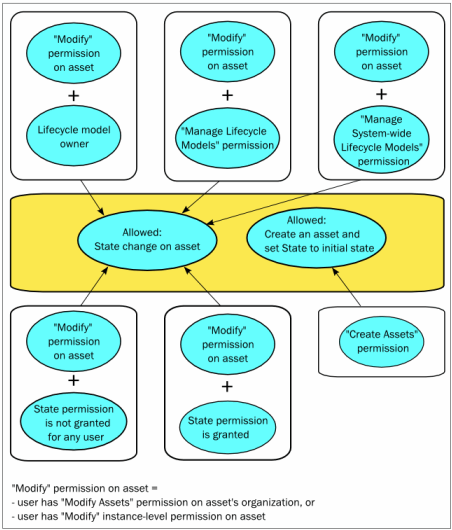Who Can Change Lifecycle State of an Asset?
For any given lifecycle model, a list of names of users and/or groups who are allowed to move assets to new states is maintained within the definition of the lifecycle model. For each user or group, the permission to move assets to new states can be restricted to a subset of the available states in the model. When the lifecycle model is assigned to an asset and a state has users or groups defined for it, only a user who is one of the defined users or groups can make the transition of the asset into that state. If no users or groups are defined for a particular state, any user who has Modify permission on the asset can change the lifecycle state for that asset.
Several rules determine who can change the lifecycle state of an asset. These rules are summarized in the following diagram.

For example: If you are the owner of a lifecycle model, you can assign any lifecycle state of this lifecycle to an asset whose asset type has this lifecycle model assigned, as long as you have the Modify Assets permission for the asset.
Any user who has the Create Assets permission can create an asset whose asset type has a lifecycle model assigned. When the asset is created, CentraSite automatically sets the lifecycle state of this asset to the initial state. However, to change the state from the initial state to another lifecycle state, the user requires the appropriate permissions as described above.
Note that the Manage Assets permission does NOT include the rights to change lifecycle states.
For more information about permissions, see Getting Started with CentraSite.
 Contact Support
|
Community
|
Feedback
Contact Support
|
Community
|
Feedback 